EW India School Rankings 2025-26
The annual EWISR has introduced overdue competitive spirit into hitherto complacent and laidback primary-secondary schools. Secondly, it has instilled institutional pride in K-12 education. Moreover, this year we have introduced a new Ivy League Schools category to rate consistenly highly ranked schools under a new grade points and star assessment system to differentiate them inter se – Dilip Thakore & Summiya Yasmeen


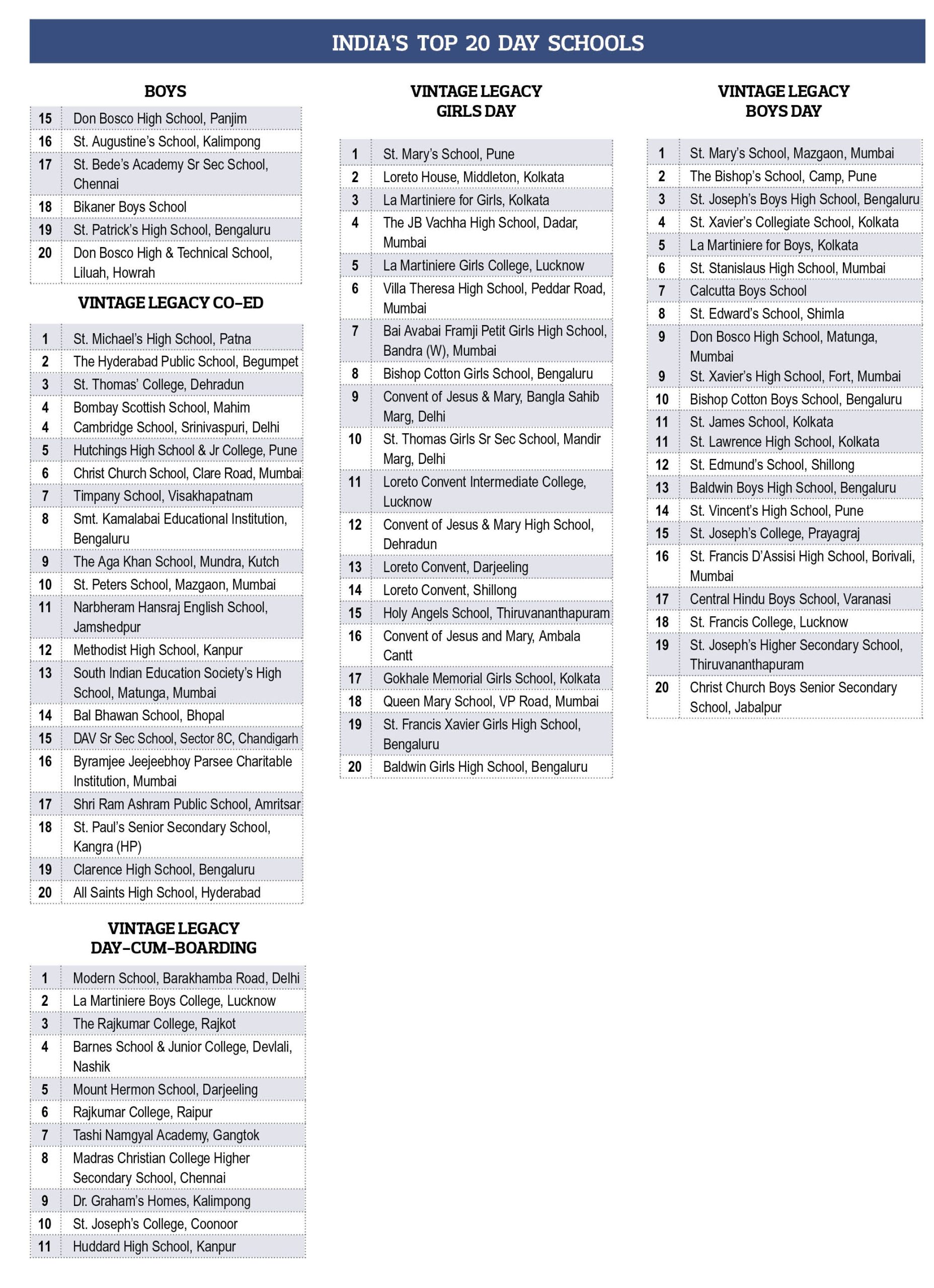
Avaluable and largely unacknowledged gift that EducationWorld (estb.1999) has endowed upon the Indian economy, is that since 2007, it has uninterruptedly commissioned field studies to elicit stakeholders’ opinions to collate and publish the annual EducationWorld India School Rankings (EWISR) survey. The EWISR survey methodology is to commission a well-reputed market research agency to compile a database of school education stakeholders — parents, teachers, educationists and senior students — and persuade them to award scores of 100-200 under 14 parameters of primary-secondary education excellence. Parameter scores are totaled to rank schools inter se in three main and 14 sub-categories.
Categorisation of schools is important and necessary. It eliminates apples with oranges type comparisons and levels the playing field for assessed schools. Self-evidently, day schools cannot be compared to boarding schools. Or well-endowed international schools with expensive infrastructure can’t be compared with private budget or free-of-charge government schools. All of them are assessed in their own sub-categories to enable parents to choose primary-secondaries and preschools (a pioneer champion of professionally-administered early childhood care and education, EducationWorld has also been publishing annual rankings of the country’s best preschools since 2010. Ditto higher education institutions) most suitable for their progeny.
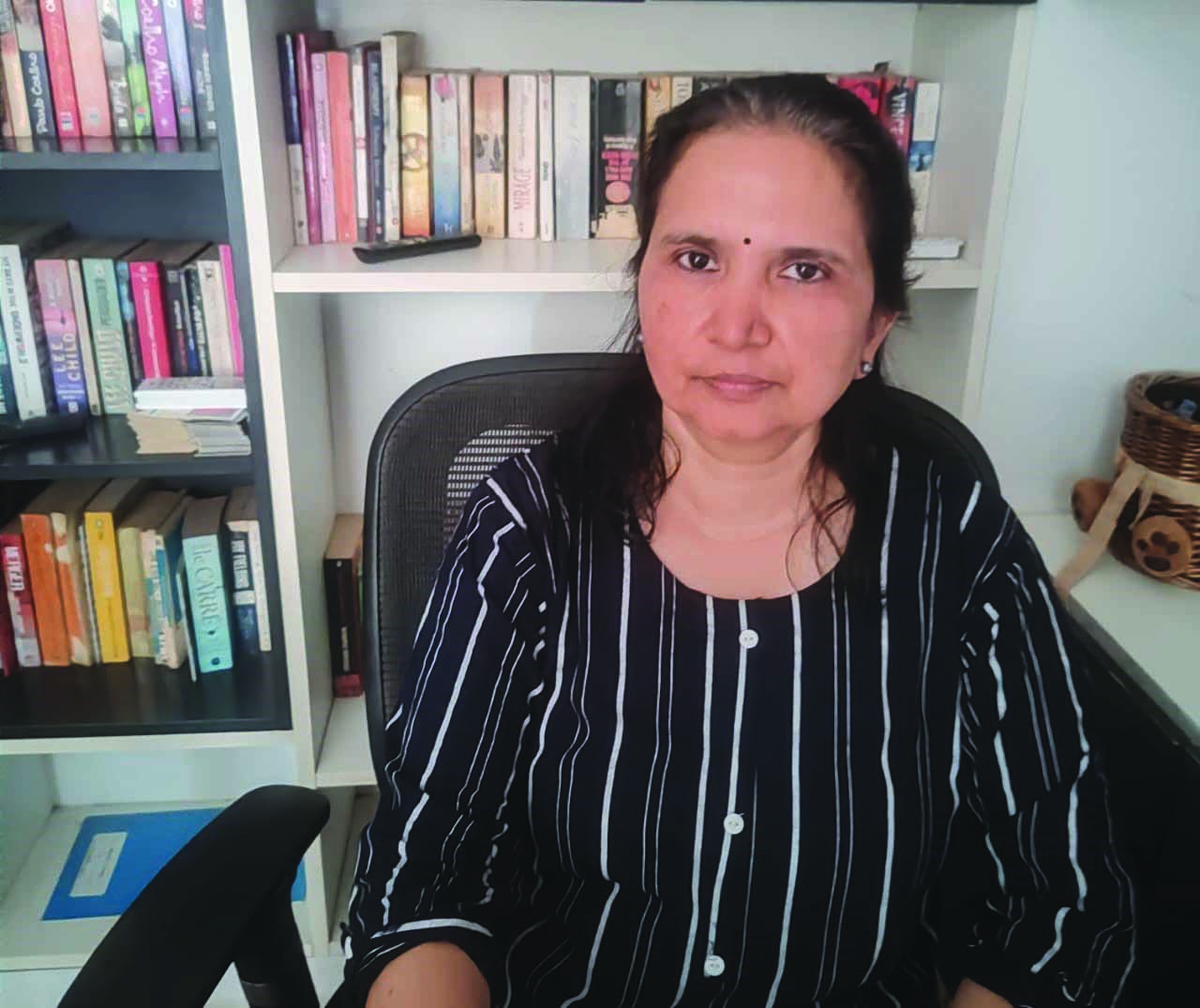
Mishra: quality over quantity
The annual EW India School Rankings (EWISR) — since photo-copied by several other enterprises, imitation welcomed as endorsement — has conferred numerous benefits upon the Indian economy and society. For one, it has introduced valuable competitive spirit into hitherto complacent and laidback school managements. Now primary-secondaries countrywide — including well-known urban government schools — have become conscious of their ranking, and even when disappointed, derive comfort from high parameter scores. This is self-evidently in the public interest as nothing drives improvement more than competition.
Secondly, the annual EWISR, has instilled a large and growing measure of institutional pride in schools — especially private sector schools which mentor 48 percent of the country’s 260 million in-school children, and are the preferred choice of India’s large (432 million) middle class. Again this is a public benefit because when school leaders, principals, teachers and students strive to excel under all or selected parameters, learning outcomes improve and there is whole school improvement. Increasingly, given strong foundational K-12 education, a new generation of young citizens are setting new standards of leadership in politics, industry and the professions. This augurs well for the future.
Inevitably, since they were initiated 18 years ago, the annual EWISR has evolved in width and depth to keep in step with changing times. To encourage school managements to provide children holistic, enjoyable teaching-learning experiences, the number of parameters under which schools are evaluated, has expanded from ten in 2007 to 14-15 this year. Innovative new parameters — mental and emotional well-being services, curriculum & pedagogy, special needs education and community service — have been added. Similarly the width of the annual EWISR has risen from 22 metros and large cities in 2007 to 458 cities and peri-urban townships across the country. This process of continuous evolution and expansion, has transformed the annual EWISR into the world’s largest and most comprehensive primary-secondary schools rankings survey. Currently EducationWorld rates 4,500 schools on 13-15 parameters of education excellence in six metros, 518 cities, tier-II and tier III towns countrywide. And although old-timers and cynical liberals often disparage schools rankings for “commercialisation of education”, for school leaders, teachers and students slaving unsung in big and small habitats countrywide, the EWISR rankings provide comfort and raise aspirations to contemporize, upgrade and improve their institutions across all parameters of K-12 education excellence.
To conduct field surveys to rate and rank over 4,000 schools countrywide, our survey partner, the Bangalore-based AZ Research Partners Pvt. Ltd expanded the number of sample respondents to 9,500 in 2025-26 from 8,700 last year.
“For the past two years since we were commissioned to conduct the EWISR survey, we have chosen the quality over quantity option. Under this strategy we have reduced the number of interviewees from previous years. Instead we have improved the quality of interaction with sample respondents using a fully structured questionnaire with responses registered using online links. We have also eliminated group and cluster interviews directing our research personnel to conduct one-on-one face-to face, telephone and/or online interviews. This has contributed to greater accuracy and authenticity of the interviewer-respondent interaction. Interviews were conducted with knowledgeable respondents in 34 cities across 22 states,” says Shubhra Mishra, Founder-Director of AZ Research Partners. An alumna of IIM-Lucknow, Mishra acquired a decade’s experience in market research (MARG, MARG-ORG) and in the corporate sector (Titan, Tata Tea and Blackstone Synovate) before she co-promoted AZ Research Partners in 2002.
This year, in pursuance of EW’s mantra of continuous improvement and especially to relieve readers from the tedium of witnessing some schools topping EW league tables year after year, on the advice of Raymond Ravaglia, Director of Launchpad LLC, a US-based education research company that rated and ranked America’s Best Universities for undergrad education earlier this year (see https://educationworld.in/rankings-americas-best-universities-2025/), we have introduced a new Ivy League Schools category for Day, Day-cum-Boarding, Residential and International schools. Unlike aggregated scores in other categories, the small number of repeatedly high-ranked primary-secondaries elevated to the Ivy League category are ranked by grade points and awarded stars (1-5) to differentiate them inter se. For further and better evaluation methodology particulars see page 40.
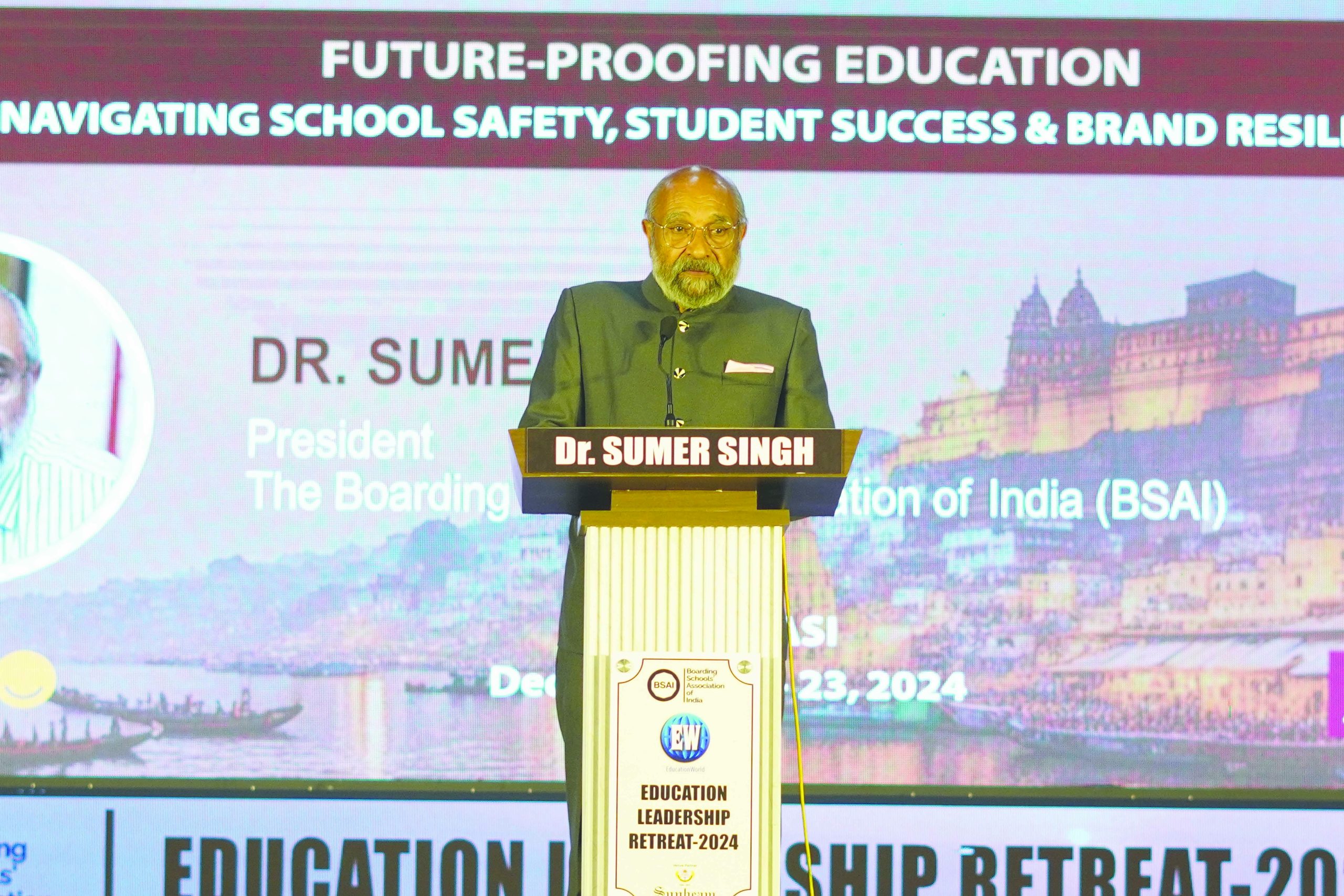
Singh: national interest survey
Since the annual EducationWorld India School Rankings were introduced in 2007, several other publications including some heavyweight national newspapers have jumped aboard the schools ranking bandwagon, with many of them having transformed institutional evaluation into undisguised quid pro quo commercial transactions. As a result some education stakeholders are inclined to question the role and purpose of rating and ranking education institutions. However Sumer Singh, the highly-experienced former principal of the top-ranked Lawrence School, Sanawar and Daly College, Indore and currently a busy Punjab-based education consultant, declines to be numbered among cynics.
“Schools ranking surveys conducted and published by high credibility publications, especially EducationWorld, serve a very useful purpose. First, they stimulate school managements to focus on areas – parameters – under which they are awarded unsatisfactory scores. This has had the beneficial outcome of schools improving across the board which is reassuring for parents. Also for alumni, donors and supporters. Secondly, high ranked schools attract the brightest students and best teachers. This ensures improved institutional learning outcomes. All this is very much in the national interest,” says Singh
In this (September) Part I issue, we present city, state, national and parameter league tables of Day schools (co-ed day, boys, girls and day-cum-boarding) and Vintage Legacy Day schools (over 90 years vintage) within these sub-categories. The next EWISR 2025-26 Part II issue (October) will feature Boarding, International, Vintage Legacy Residential, Government, Special Needs, Philanthropy and Super 30 Budget private schools league tables.








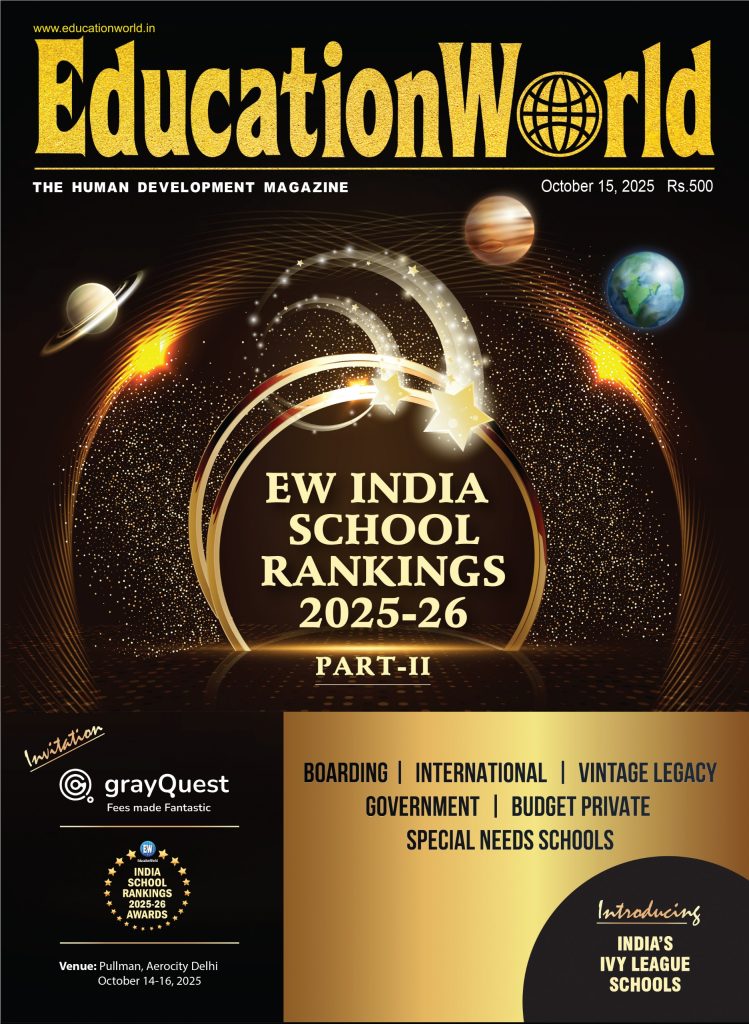
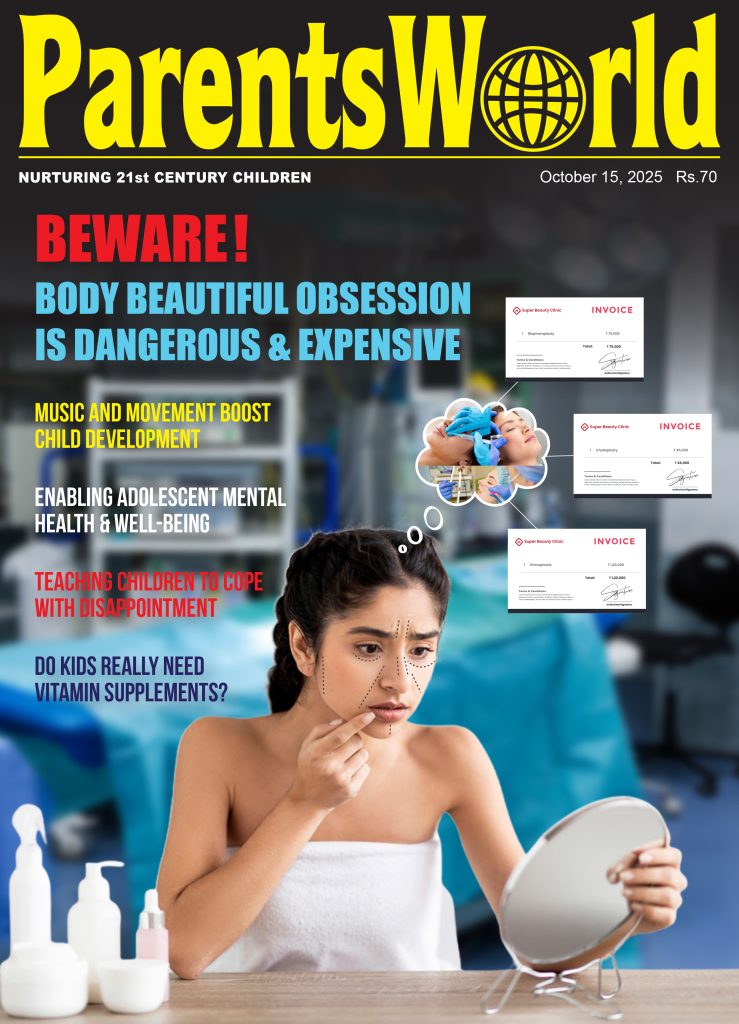



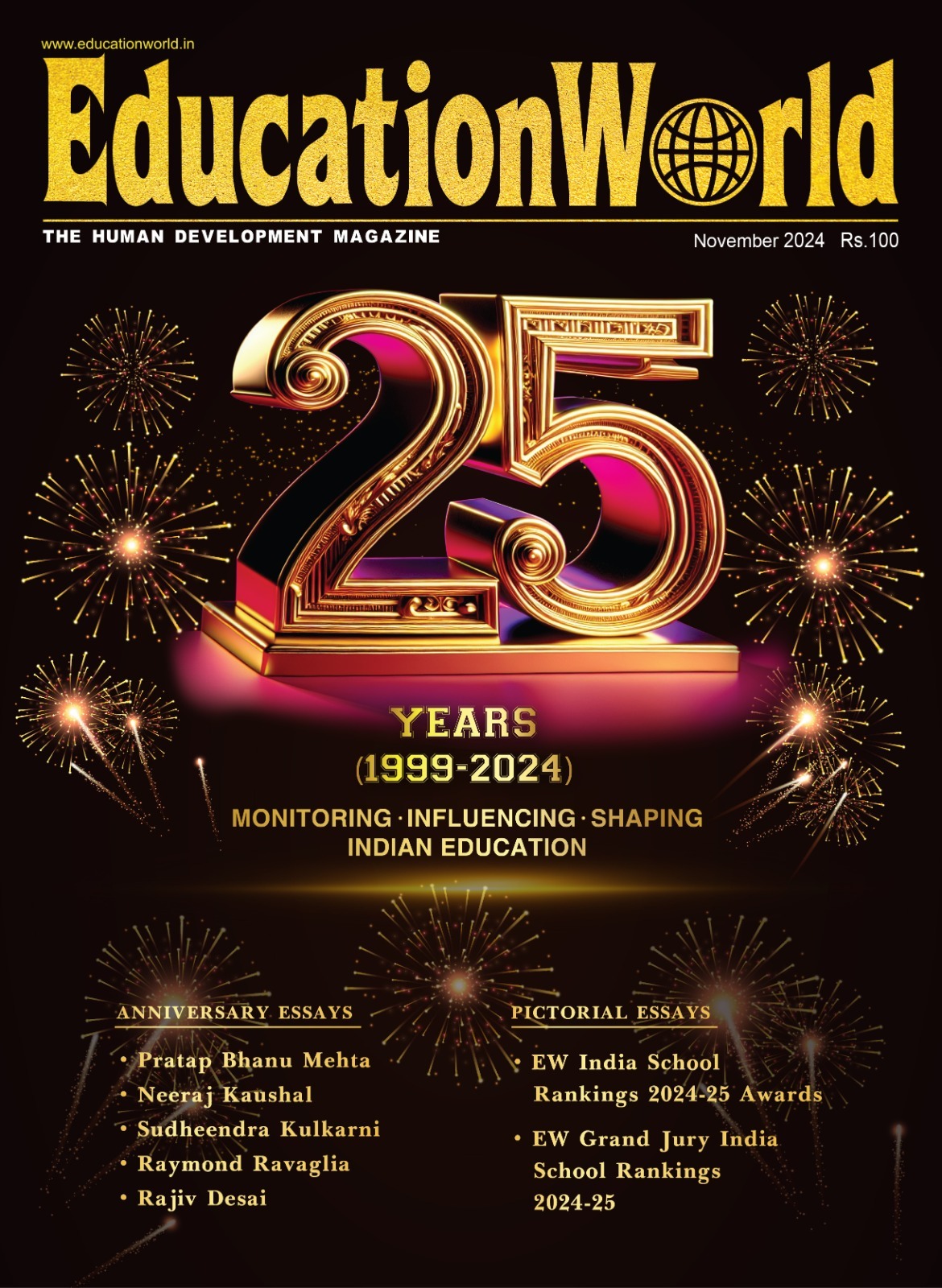



Add comment